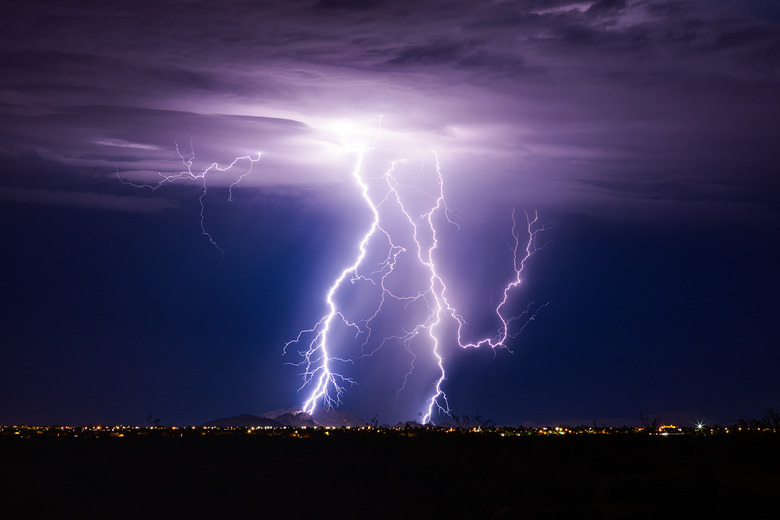How To Attract Lightning
How to Attract Lightning. To many people, the image of Benjamin Franklin standing in the middle of a thunderstorm holding a kite with a key tied to the end is the first thing that comes to mind when they think about ways to attract lightning. Although Franklin's method is largely considered ineffectual, it represents peoples' curiosity and fascination with this natural marvel. There are many myths surrounding lightning and how to attract it, here are some truths.
Step 1
Stand outside. The very act of being outside during a thunderstorm highly increases your chances of being struck by lightning, regardless of what you hold or wear.
Step 2
Hold a lightning rod, or stand near one. Although it isn't guaranteed, people generally use lightning rods (invented by Benjamin Franklin) to attract lightning on the tops of tall buildings. The electricity goes through the lightning, through a wire and into the ground instead of into the building and all of its electronic equipment.
Step 3
Be a man. For reasons unexplained, a study printed in1999, revealed that 84% of lightning fatalities between 1959 through 1994 were men. Men also accounted for 82% of injuries caused by lightning during the same time span.
TL;DR (Too Long; Didn't Read)
The idea that metal objects (such as jewelry, keys, golf clubs or cleats) attract lightning is false. The position of a storm relative to where someone is determines where lightning strikes. Small objects are far too insignificant to affect the lightning's course. However, if you are struck while holding or wearing metal, it could leave severe burns which make the experience that much more unpleasant. Lightning typically falls under one of two categories: cloud to cloud or cloud to ground. Cloud to cloud is more common, as there is generally far less distance between clouds than between a cloud and the ground. People who have been struck by lightning often report a tingling sensation and the hair on their body standing on end. The feeling is similar to that of static electricity. If you feel this sensation and don't wish to be struck, quickly dive out of the way. The lightning is attracted to the ground where you are standing, not to you.
Warning
There is a saying that lightning never strikes twice in the same place, but this is false. Some buildings, such as the Empire State Building, have been struck hundreds of times during the same storm.
Cite This Article
MLA
Contributor, . "How To Attract Lightning" sciencing.com, https://www.sciencing.com/attract-lightning-2086541/. 11 September 2007.
APA
Contributor, . (2007, September 11). How To Attract Lightning. sciencing.com. Retrieved from https://www.sciencing.com/attract-lightning-2086541/
Chicago
Contributor, . How To Attract Lightning last modified March 24, 2022. https://www.sciencing.com/attract-lightning-2086541/
